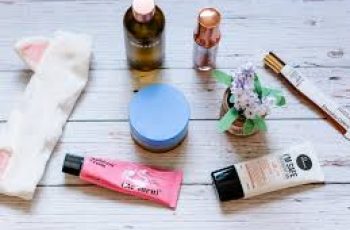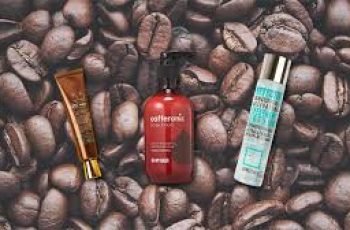
Skin Barrier and Causes of A Damaged Skin Barrier
When the skin barrier is broken and disrupted, the skin’s health is compromised. This blog will explain the science and anatomy of the skin barrier, Damaged moisture barrier symptoms can be identified using a quiz that dermatologists use to identify the Baumann Skin Type.
What is the Skin Barrier?
The definition of skin barrier is a protective layer of lipids that surround skin cells in the epidermis.
The function of the skin barrier is to keep water in the skin and prevent entry of germs, allergens and irritating substances into the skin.
Other names for the skin barrier are:
the moisture barrier
lipid barrier
skin protective barrier
skin water barrier
multilamellar layer
lipid bilayer
An intact skin barrier prevents water from evaporating off of the skin’s surface.
Intact skin barrier
A compromised skin barrier causes holes in the skin barrier.
A broken moisturize barrier allows:
water to leave the skin’s surface
allergens to enter the skin
microbes like bacteria to enter the skin
better penetration of skincare products
increased retinoid side effects
Toxic chemicals to get into the skin
Compromised skin barrier
What causes barrier damage?
A damaged skin barrier may be genetic or it may be caused by something your skin is exposed to.
The skin barrier is damaged by:
Chlorine in water such as swimming pools
Cholesterol lowering drugs like statins
Friction
Hard water with calcium and magnesium
Harsh detergents or surfactants
Lack of fat or cholesterol in diet
Exfoliants
Poor diet (not enough fat)
Water (type and exposure time matter)
Cholesterol lowering drugs
Habits that Injure the skin barrier
I often see patients who have an injured skin barrier due to their habits. In their case, it is not a genetic issue, but something they are doing wrong. These habits can injure your skin barrier by stripping needed lipids from your skin:
Overexfoliation
Too frequent baths
Bath and showers that are too hot
Prolonged immersion in chlorinated water
Cleansers that have too many detergents (vigorously foaming cleaners)
Soaps
Using baking soda on the skin
Beginning a retinoid
Damaged Skin Barrier
A damaged skin barrier makes your skin susceptible to dehydration, rashes, infection, and inflammation.
A broken moisture barrier has tiny holes in between skin cells that allow damaging substances into the skin.
Compromised skin that has a disrupted skin barrier is more susceptible to:
Allergy
Chemical burn
Dehydration
Infection
Inflammation
Irritation
Stinging
How To Know If Your Skin Barrier Is Compromised
You can tell if your skin barrier is damaged if your skin is:
Dull
Dry
Itchy
Rough
Uncomfortable 20 minutes after washing when no moisturizer is applied
Feels tight and stiff without moisturizer
Happiest when you use a heavy moisturizer
Soothed when oils are applied
There are devices that can measure if the skin barrier is compromised such as a TEWAmeter® and a Corneometer®.
Dermatologists use our skin type quiz to detect a damaged skin barrier.
Take the Quiz
Find out if your skin barrier is damaged
How do you break the skin barrier?
Detergents and soaps in foaming cleansers destroy the skin barrier by removing lipids from the skin.
Examples of lipids in the skin are cholesterol, ceramides and fatty acids.
Detergents weaken the skin barrier by removing these lipids. They surround the lipids and strip them away from the upper layers of the skin.
How detergents injure the skin barrier
Friction and minerals in water can also break the skin’s moisture barrier by stripping it of lipids.
Does water hurt the skin barrier
Does water disrupt the skin barrier?
Water has a big effects on the skin barrier.
These attributes of water can compromise the skin barrier:
Exposure time
Calcium
Chlorine
Magnesium
Salt (sodium chloride)
Temperature
Learn more about the best type of water to wash your face and body with here.
How water affects the skin barrier
How do you know if your skin barrier is damaged?
A damaged moisture barrier leads to dehydration, inflammation and impaired desquamation.
Damaged skin barrier symptoms are:
Ashy skin
Bumpy skin
Dry dehydrated skin
Dull skin
Eczema.
Inflammation
Itching
Poor skin texture
Reactive Skin
Rough skin
Stinging
Uneven skin texture
What Are the Signs of a Damaged Moisture Barrier?
Signs of a compromised skin barrier are:
Frequent rashes
Itching
Poor light reflection
Rough texture
Sensitive skin
Where Is The Skin Barrier Located?
skin barrier is in the upper layer of the epidermis
The skin barrier is in the upper layer of the epidermis called the stratum corneum.
What layer of the skin is the skin barrier?
Skin barrier in the stratum corneum
The skin barrier is in the outermost layer of the epidermis, called the stratum corneum.
It is a bilayer membrane that surrounds the skin cells, called keratinocytes.
There are multiple layers of the lipid bilayers in between each keratinocyte of the stratum corneum.
The skin barrier has multiple bilayers
How Does the Skin Barrier Work?
The skin barrier is a bilayer of lipids that surround the skin cells in the upper part of the epidermis.
These multilamellar membranes bathe keratinocyte skin cells in protective lipids.
The lipids (fats) that make up the skin barrier are:
ceramides
fatty acids
cholesterol
These lipids line up in bilayer membranes so that their hydrophobic tails (yellow in the illustration) form a center section that repels water. The way the lipid line up determines how strong the barrier is. The strongest barriers show a maltese cross pattern under the microscope.
When lipids are packed together in the tightest way, this prevents the passage of water across the multilamellar membranes.
Lipids form a bilayer structure to form the skin barrier
The lipids that form the bilayer membranes are like puzzle pieces.
They must be the correct size and shape to fit together and eliminate any spaces between them.
You must have a 1:1:1 ratio of lipids.
Lipid shape determines skin barrier strength
What Is the Skin Barrier Made Of?
The skin barrier is made of of 3 main lipids:
Ceramides
Fatty acids
Cholesterol
There are many different kinds of fatty acids, and the type of fatty acid affects barrier strength and function.
Barrier repair moisturizers should:
Contain the correct 1:1:1 ratio of lipids to repair the skin barrier
Show a maltese cross pattern when viewed under a cross polarized microscope.
Have soothing oils
Have a combination of humectants and occlusive ingredients
Learn more about the lipids in the skin barrier with my interview with a skin barrier scientist on You Tube.
What Is the Best Way To Repair a Compromised Skin Barrier?
Moisturizers that have the three lipids (ceramides, fatty acids and cholesterol), or that contain barrier repair technologies, will repair the skin barrier.
Click here to learn more about how to repair the skin barrier and find the best barrier repair moisturizers.
How to find barrier repair moisturizers
Where Do the Lipids in the Skin Barrier Come From?
The skin barrier components are mostly made by the skin. The lipids in the skin barrier come from:
Diet- fats and oils in the diet
Enzymes in the epidermis15
Granules in the granular layer of the epidermis
Sebum
Moisturizers and other skin care products that contain lipids and oils
What Can Damage the Skin Barrier?
The wrong skin care products are the most common cause of a broken skin barrier.
These factors also damage skin barrier integrity:
Cholesterol-lowering medications like statins16
Poor diet leads to fewer nutrients
Vegan diets low in cholesterol and fat
Gut microbiome and use of probiotics17
Presence of inflammation from disease
Genetic defects such as a defect in filaggrin gene18
What products can damage your skin barrier?
If you have a damaged skin barrier, avoid these ingredients:
Alcohol- denatured
Essential Oils
Exfoliants
AHAs (alpha hydroxyacids)
Acne medications such as benzoyl peroxide
Retinoids
Foaming cleansers
Preservatives
Fragrances
Retinoids and hydroxyacids initially damage the skin barrier, but once you use them regularly they strengthen the skin barrier. I take this into account when I design your custom skin care routine based on your skin care routine quiz.


